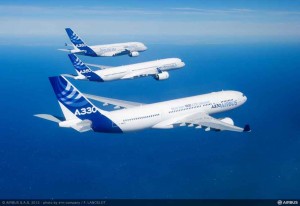Airbus has also landed a highly lucrative – and significant – order for 118 aircraft from Iran as the Middle East country rebuilds its post-sanctions economy.
The order – worth $27bn (£18.7bn) at list prices – spans Airbus’s entire range from short-haul, single-aisle aircraft to the A380 superjumbo, the world’s largest commercial airliner.
It provides a major boost for the West of England’s aerospace sector, including GKN, which makes wing sections in Bristol for most of the aircraft types ordered, and Airbus itself, which employs 4,000 people at its Filton plant, where it designs the wings for its entire fleet. 
The deal had been widely trailed since trade sanctions against Iran were lifted two weeks ago following its landmark nuclear deal with the world’s major nations. It gives a major boost to Airbus in a new market for the group.
European firms hope that by welcoming Iran in from the diplomatic cold, they will net major deals to modernise its infrastructure. Before sanctions were imposed in 2011, some 20% of Iran’s trade was with Europe.
The agreement includes pilot and maintenance training and support services to help the entry into service and efficient operations of the new aircraft. Iran had been banned from acquiring new aircraft under the sanctions – leaving it with an aging fleet and an unwelcome reputation as having one of the world’s poorest air-safety records.
The Airbus deal includes 45 single-aisle planes made up of 21 from the current-generation A320 family and 24 A320neos, which have new, more efficient engines. The 73 wide-body aircraft ordered include 27 A330s, 18 A330neos, 16 of the latest A350s long-haul planes as well as 12 A380s superjumbos.
Airbus President and CEO Fabrice Brégier said: “The skies have cleared for Iran’s flying public and Airbus is proud to welcome Iran’s commercial aviation back into the international civil aviation community.
“Today is a significant step in the overhaul and modernisation of Iran’s commercial aviation sector and Airbus stands ready to play its role in supporting it.”
The agreement – which includes a comprehensive civil aviation co-operation package – was signed at the Élysée Palace in Paris by French president François Hollande and Iranian president Hassan Rouhani as part of his official visit to France.
Airbus employs around 4,000 people at Filton working primarily on wing design, landing gear and fuel systems. Most wings sections designed by Airbus are now made by GKN Aerospace at its Filton base – which it bought from Airbus in 2008. GKN Aerospace also has a new plant at Severnside making composite wing sections for the A350.
The A320neo (new engine option) programme developed at Filton has upgraded the existing short-haul A320 aircraft range with new engines and aerodynamic state-of-the-art ‘sharklet’ wingtips.
As a result it can save up to 15% on fuel on an average flight – a huge cost saving for airlines which also brings massive environmental benefits.






























